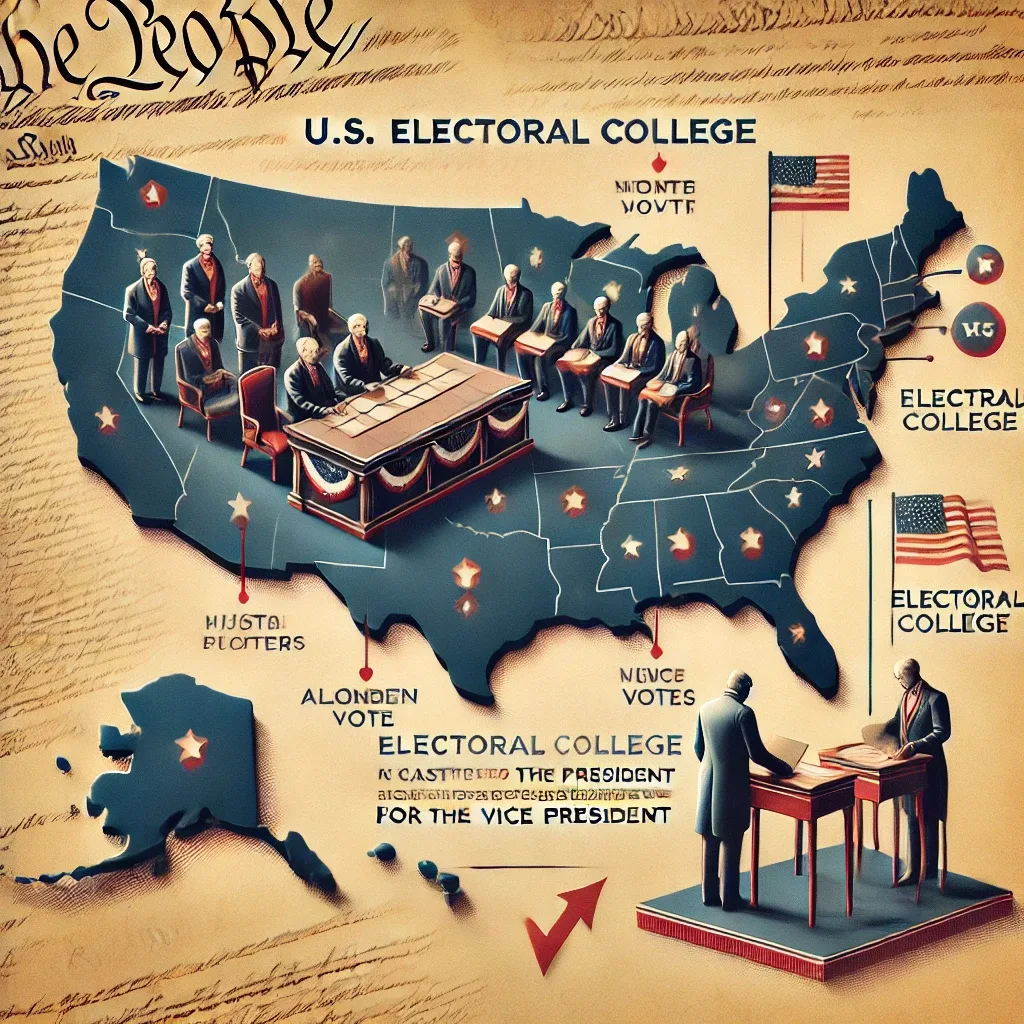The Electoral College is the formal body which elects the President and Vice President of the United States. Each state has as many “electors” in the Electoral College as it has Representatives and Senators in the United States Congress, and the District of Columbia has three electors. When voters go to the polls in a Presidential election, they actually vote for the slate of electors who have vowed to cast their ballots for that ticket in the Electoral College.
Role of Electors
Most states follow a winner-takes-all approach, awarding all their electoral votes to the candidate who secures the majority in that state. After election results are certified, electors convene in their state capitals to cast separate votes for President and Vice President. The Constitution prohibits electors from voting for both candidates if they hail from the elector’s home state. This rule was designed to prevent larger states from dominating elections.
Maine and Nebraska employ a district-based system, assigning two electors to the statewide winner and distributing the rest based on congressional district outcomes. While electors are typically bound by law to vote as pledged, faithless electors—who vote contrary to their pledge—have emerged in past elections. However, their influence has never altered an election outcome.
The Electoral College Process
Since the mid-20th century, Congress has convened every four years on January 6 to officially count electoral votes. The Vice President presides over the session, announcing state results in alphabetical order. Four tellers—two from the House and two from the Senate—verify and declare the vote count. Once completed, the Vice President announces the next President.
With the ratification of the Twentieth Amendment, electoral votes are now counted before the newly elected Congress takes office. The process has occasionally been modified, with date adjustments occurring in several election years.
Electoral Vote Objections
Federal law, 3 U.S.C. 15, allows members of Congress to object to electoral votes during the official count. Objections must be submitted in writing and signed by at least one Senator and one Representative. If an objection is raised, both chambers debate it separately for a maximum of two hours before reconvening. For an objection to succeed, both chambers must agree to discard the contested votes. Historically, objections were raised in 1969, 2005, and 2021, but none resulted in electoral vote changes.
Efforts to Amend the Electoral College
The Electoral College was established as a compromise between direct popular elections and congressional selection of the President. Prior to 1804, electors did not differentiate between presidential and vice-presidential votes. The Twelfth Amendment corrected this by requiring electors to specify their choices for each office.
Throughout history, several attempts have been made to reform or eliminate the Electoral College, especially following elections where a candidate won the popular vote but lost the presidency. Notable instances occurred in 1824, 1876, 1888, 2000, and 2016. The closest Congress came to abolishing the Electoral College was in 1969 when a proposed amendment passed the House but failed in the Senate.
Contingent Elections
If no candidate secures a majority of electoral votes, the House of Representatives determines the President, with each state delegation casting a single vote among the top three candidates. This has happened twice, in 1800 and 1824. In 1876, a bipartisan commission awarded contested electoral votes to Rutherford B. Hayes, securing his victory by a single vote.
The Electoral College remains a crucial yet debated component of the U.S. presidential election system, with ongoing discussions about potential reforms.
